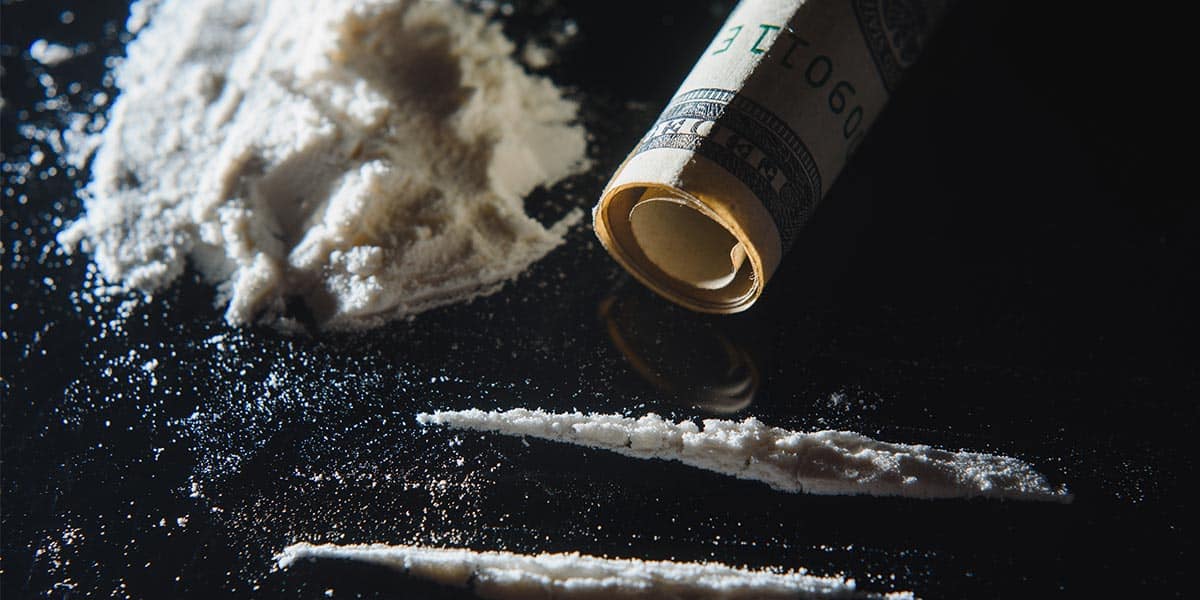
Table of Contents
Key Points
- Cocaine is a highly addictive stimulant drug that is often abused in the United States.
- People who use cocaine often experience intense euphoria, increased energy, and talkativeness, followed by a "crash" characterized by fatigue, irritability, and sometimes depression. The onset, intensity, and duration of these effects vary and are not universally immediate.
- People who become addicted to cocaine may face adverse health effects, including cardiovascular complications, neuropsychiatric symptoms, and increased risk of infectious diseases.
- There is no FDA-approved medication to treat cocaine addiction or cocaine use disorder.
- Several behavioral therapies may be effective for treating cocaine use disorder, including cognitive behavioral therapy (CBT), contingency management (CM), and therapeutic communities (TC).
- After recovery, people with cocaine use disorder may need ongoing aftercare and relapse prevention support to maintain their sobriety.
Symptoms of cocaine use can vary widely depending on how much is taken, when it was last taken, and where the person may be in the cycle of addiction related to cocaine abuse. Initial effects of cocaine use might appear positive, while the comedown can be miserable. People who are addicted to cocaine often lose weight, have a runny nose that never stops, and neglect their hygiene.
There may be emotional and behavioral signs of cocaine addiction as well, including mood swings, sleeping less than usual, and showing less interest in social or other enjoyable activities. In extreme cases, a person addicted to cocaine or crack will experience paranoia, hallucinations, severe depression, and even violent behavior.
What Is Cocaine?
Cocaine is a powerful stimulant alkaloid that is extracted from the leaves of the coca plant (Erythroxylum coca), native to South America. It is often used in the form of a white powder. When cooked, cocaine is referred to as “crack” or “crack cocaine.” Other street names for cocaine may include blow, coke, snow, and Big C.
Cocaine is an illegal narcotic. Due to the high potential for substance abuse and addiction related to cocaine use, the U.S. Drug Enforcement Agency has classified it as a Schedule II controlled substance. [1] Using, possessing, or selling cocaine is illegal under both federal and state laws. However, simple possession is typically prosecuted at the state level unless it occurs in specific federal jurisdictions or involves trafficking.
What Are the Effects of Cocaine Use?
Cocaine affects the brain’s reward system, releasing a large amount of dopamine at once. The short-term effects of this may result in a feeling of energetic euphoria. Over time, the brain becomes accustomed to this oversupply of dopamine and begins to crave it, relying on it. This often leads to a substance use disorder, known as cocaine use disorder.
Short-Term Effects of Cocaine Use
Initially, a small dose of cocaine might make a person feel energetic and happy. They may seem upbeat and talkative. Often, they can go for longer periods without eating or sleeping. Larger doses of cocaine may have different effects, leading to agitation, paranoia, and even violent behavior. [2]
Short-Term Physical Side Effects
If someone you know is using cocaine, you might be able to tell by observing some of the physical effects of cocaine abuse: [3]
- Dilated pupils
- Rapid heart rate
- Increase in body temperature
- Blood pressure spike
- Constricted blood vessels
- Muscle twitches
- Tremor
- Vertigo
Long-Term Side Effects of Cocaine Abuse
In addition to substance use disorder, cocaine abuse can result in other unwanted complications long-term, including: [4]
- Heart attack
- Stroke
- Pneumonia
- Hepatitis C (in case of cocaine use through injection)
- HIV/AIDS (in case of cocaine use through injection)
- Increase in epilepsy-related seizures (particularly in people with pre-existing epilepsy.)
Signs of Cocaine Addiction
The addictive properties of cocaine are undeniable. Research suggests that approximately 15% of people who use cocaine become addicted within ten years. [5] If you suspect a loved one is addicted to cocaine, there are some signs you can watch for. Some of the telltale symptoms of a cocaine addiction include: [6]
- Weight loss/ loss of appetite
- Poor personal hygiene
- Constant runny nose
- Mood swings
- Sleeping less than usual
- Frequent upper respiratory infections
- Loss of interest in social activities
- Mental health issues (e.g., hallucinations, paranoia, depression)
- Cocaine withdrawal (i.e., physical dependence)
If you or a loved one is experiencing signs of cocaine addiction, also known as cocaine use disorder, professional help is available. You don’t have to face this alone.
Cocaine Withdrawal Symptoms
Cocaine withdrawal typically lacks the severe physical complications seen in alcohol or benzodiazepine withdrawal, but it can still pose serious psychological risks, including suicidal ideation. Cocaine withdrawal does not typically cause severe physical symptoms like alcohol or opioid withdrawal. Some physical symptoms—such as fatigue, increased appetite, and psychomotor retardation—can occur alongside emotional symptoms. These withdrawal symptoms could include: [7]
- Feeling generally uncomfortable
- Restlessness
- Agitation
- Fatigue
- Nightmares
- Increase in appetite
- Intense cravings for cocaine
Most of the time, cocaine withdrawal is simply uncomfortable. The term “crash” is widely used to describe the initial phase of cocaine withdrawal, which includes fatigue, hypersomnia, and dysphoria. Other times, it could be more serious. Some of the complications of serious cocaine withdrawal may include:
- Depression
- Suicidal thoughts and behaviors
Often, people who are experiencing cocaine withdrawal symptoms will attempt to self-medicate with other drugs like alcohol, sedatives, or anxiety medications. This is not recommended and can have both short-term and long-term negative consequences.
Because of these serious risks, it is recommended to detox in a treatment facility under the supervision of a medical professional. If you or a loved one is experiencing suicidal thoughts, call or text the 988 Suicide Crisis Lifeline anytime, day or night.
Cocaine Overdose
One of the primary risks of cocaine addiction is the possibility of an overdose. It is important to be aware of the signs of an overdose, since it can be life-threatening: [8]
- Hallucinations
- Delirium
- Aggression or violent behavior
- Seizures
- Chest pain
- Coughing up blood
- Irregular heartbeat
- Trouble breathing
- Heat-related illness
Cocaine Addiction Treatment
Cocaine use disorder, or cocaine addiction, is notoriously hard to treat, but it’s not impossible. For other types of drugs, medications are available to help a person detox. This is not the case for cocaine, though. Research is ongoing to determine if any medications could help treat cocaine use disorder in the future. [9]
Currently, the protocol for treating cocaine use disorder involves behavioral therapies and peer/community support. Some of these treatments include cognitive behavioral therapy (CBT), contingency management, therapeutic communities, and aftercare support.
CBT for Cocaine Use Disorder
Cognitive behavioral therapy (CBT) is an evidence-based mental health treatment used for a wide range of conditions, including depression, anxiety, and even insomnia. CBT can be useful for those with cocaine use disorder, teaching them to evaluate and reframe some of the thoughts and feelings that drive them to use cocaine. In CBT, individuals also learn coping strategies to deal with problems related to drug use.
Contingency Management for Cocaine Addiction
Contingency management (CM) is a treatment approach that offers motivational incentives that reward people for abstaining from cocaine use. Research indicates that contingency management is particularly beneficial for individuals in the early stages of rehabilitation, as it can encourage them to remain in treatment. [10]
Therapeutic Communities for Cocaine Use Disorder
Therapeutic communities are structured, long-term residential programs that integrate multiple treatment modalities, although combining them with outpatient methods can be logistically challenging. [11] To achieve success, individuals may need to stay in a rehabilitation facility for six to twelve months. During this time, they’ll participate in mental and behavioral health treatments, vocational rehabilitation, and peer support groups.
Aftercare Support for Cocaine Addiction
After the initial treatment, people with cocaine use disorder often require ongoing support to maintain their sobriety. Often, aftercare services are tailored to the individual’s needs. These can include family counseling, mental health treatment, vocational support, and more.
Hope for Cocaine Abuse and Addiction
Cocaine use disorder, or cocaine addiction, can be a powerful and relentless force in a person’s life. This disorder can be treated, though. With the proper treatment and support, many people recover from cocaine addiction and go on to live successful, sober lives. Don’t lose hope. It can sometimes take several attempts at rehabilitation for a person to remain drug-free.
Frequently Asked Questions About Cocaine Symptoms
OCEAN RECOVERY EDITORIAL GUIDELINES
The internet contains a vast amount of misinformation, but when it comes to your health only peer reviewed, research centered data matters. At Ocean Recovery, all content published throughout our website has been rigorously medically reviewed by a doctorate level clinician, and cross checked for medical accuracy. Our editorial process helps our readers trust that the information they are consuming is factual and based upon scientific data. Your health is our top priority, find out more about how we safeguard the integrity of information on our website. Read More About Our Process





